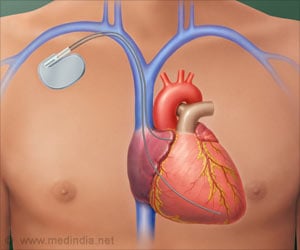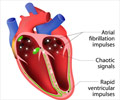New clinical practice guidelines for treating atrial fibrillation (Afib) have been issued by The Society of Thoracic Surgeons (STS).

‘The newly issued guidelines highlights the increasing global evidence on the safety and efficacy of surgical ablation for the treatment of atrial fibrillation.’





New clinical practice guidelines have been issued by The Society of
Thoracic Surgeons (STS) that include major recommendations for the use
of surgical ablation when treating atrial fibrillation (Afib). The guidelines, posted online today in The Annals of Thoracic Surgery, will appear in the January 2017 print issue.
"These guidelines represent nearly two years of effort by some of the nation's leading experts in the surgical treatment of atrial fibrillation," said guidelines co-author Vinay Badhwar, Gordon F. Murray Professor and Chair of the West Virginia University Heart & Vascular Institute. "This important document highlights the increasing global evidence on the safety and efficacy of surgical ablation for the treatment of Afib."
STS believes that the practice of summarizing current scientific evidence into clinical practice guidelines and recommendations may contribute importantly to improving surgical outcomes, as well as the quality of patient care. In this case, the literature revealed that surgical ablation as a treatment option for Afib has experienced continued development over the last 30 years, with its frequency and success steadily increasing.
The guideline writing committee merged these findings into a singular consensus paper to shape practice, concluding that surgical ablation is effective in reducing Afib and improving quality of life, and so deserves a more prominent role in adult cardiac surgery.
Advertisement
"It is recognized that surgical ablation impacts long-term outcomes with improvements in normal heart rhythm, quality of life, and stroke reduction," said Dr. Badhwar. "Current evidence reveals that surgical ablation can be performed without significant impact to major complications or death."
Advertisement
The new clinical practice guidelines offer evidence-based recommendations that include:
- Surgical ablation for Afib at the time of concomitant mitral operations to restore cardiac rhythm;
- Surgical ablation for Afib at the time of concomitant isolated AVR, isolated CABG, and AVR+CABG operations to restore cardiac rhythm; and
- Surgical ablation as a primary standalone procedure to restore cardiac rhythm for symptomatic Afib that is resistant to medication or catheter ablation.
The authors also recommend a multidisciplinary heart team assessment, treatment planning, and long-term follow-up in order to optimize patient outcomes in the treatment of Afib.
"These guidelines may help guide surgeons when faced with a challenging decision on the management of Afib," said Dr. Badhwar. "The guidelines represent an assimilation of the world's literature; they do not supersede the final medical decision of the surgeon. It is important to remember that the ultimate choice of any therapy remains between the patient and their doctor."
Source-Eurekalert












